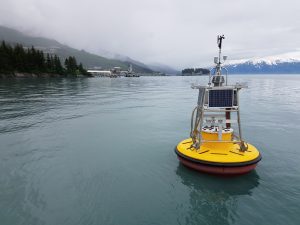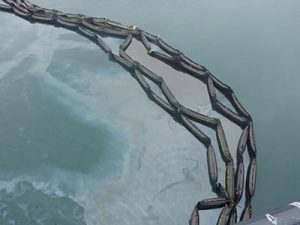By Austin Love
Council Project Manager
Over the past three years Alyeska has improved safety and spill prevention measures at the Valdez Marine Terminal’s ballast water treatment facility. In 2012, the Council recognized Alyeska for major improvements made to the facility that significantly reduced the emission of hazardous air pollutants from the facility. These current improvements further enhance environmental safety.
Work to improve safety and spill prevention at the ballast water treatment facility includes:
- the demolition of one of the two crude oil recovery tanks;
- replacement of old carbon steel piping with new stainless steel and fiberglass reinforced plastic piping;
- new electrical wiring and conduit;
- total refurbishment of a number of valves;
- installation of new valve actuators;
- installation of two new recovered crude oil pumps;
- installation of roofs to protect equipment from snow damage;
- upgrades to the inert gas (nitrogen) system;
- installation of new hydrocarbon sensors;
- move from manual operations to automated, logic control-based operation of the facility;
- installation of an automated ventilation and incinerator system that would turn on before hydrocarbon gas levels in the system become unsafe.
In general, many of these upgrades were made to improve the safe operations of the facility. Replacing the carbon steel piping with stainless steel and fiberglass reinforced plastic reduces the risk of an oil spill because corrosion rates are much lower in the new piping materials. The move to automated, logic control-based facility operation is intended to reduce the risk of a spill or another problem due to human error. The installation of multiple, more accurate hydrocarbon sensors improves monitoring of hydrocarbon gas throughout the system, helping facility operators ensure concentrations of those gases stay in a safe range. Finally, the installation of the automated ventilation and incinerator system keeps people out of harm’s way in the event of a buildup of hydrocarbon gas and routes that gas for destruction in an incinerator before concentrations become unsafe. Currently, such ventilation is done by sending technicians out to turn on the soon-to-be replaced manual ventilation system.
Using better piping materials, reducing the chance of operator error, and decreasing people’s exposure to hazardous situations are all ways that the multiyear upgrades to the facility should result in safer operations.
What is ballast water? Why does it need to be treated?
Ballast water is seawater taken on board an oil tanker to improve stability at sea. If the ballast water has been transported in an oily cargo tank, it must be treated to remove remnants of oil before the water can be released back into the sea. Over the years, the volume of water needing treatment at the Valdez Marine Terminal has been greatly reduced because the tankers now calling in Prince William Sound all have double hulls and far fewer tankers are visiting the terminal because of reductions in pipeline throughput. However, severe weather encountered on the trip to Alaska sometimes requires extra ballast be carried in oily cargo holds, more ballast than can be contained in the clean, segregated tanks of a double hull tanker. That oil contaminated ballast is cleaned at the terminal’s ballast water treatment facility prior to discharge into Port Valdez.


